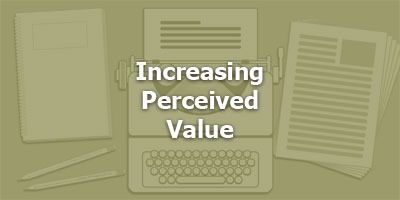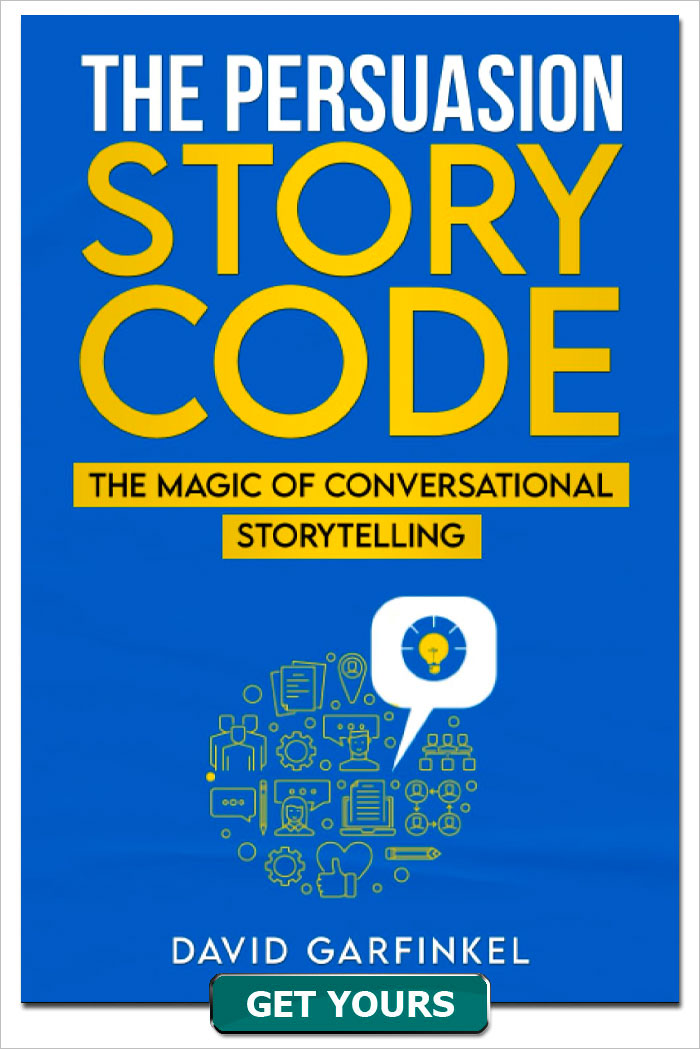Episode 045 - Increasing Perceived Value
Published by: David Garfinkel on 02-25-2018
Tweet
Native Instruments purchase - $1200 for a hard drive filled with music software and virtual instruments. This cost me more than a lot of my guitars!
I called my sales engineer at Sweetwater, Brian.
What he explained to me.
What I’d be able to do… what I would not have to spend… or take time learning.
Suddenly, it didn’t seem that expensive.
Think about what it would have cost to do that in real life. Rent Davies Symphony Hall. $2500 minimum – already more than twice what I paid for the software.
And that does not include
• Hiring a trumpet soloist
• Hiring a woodwind ensemble, with flutes, oboes, clarinets, bassoons, saxophones, contrabassoons and bass clarinets.
• Or hiring a string section, with cellos, violas and violins
And that’s just for starters. Add to that the cost of professionally setting up microphones and recording the instruments; then, mixing and producing the finished piece. We’re easily now between $3000 and $4000 just for 10-1/2 seconds of music.
So now you can see how suddenly $1199 was not nearly as much money.
And that’s an example of how you demonstrate perceived value.
Before we go further, this message:
Warning
Copy is powerful. You’re responsible for how you use what you hear on this podcast. Most of the time, common sense is all you need. But if you make extreme claims… and/or if you’re writing copy for offers in highly regulated industries like health, finance, and business opportunity… you may want to get a legal review after you write and before you start using your copy. My larger clients do this all the time.
Perceived Value
It seems like a lot of hocus-pocus. But it’s not. It’s the applied use of your imagination to understand and then explain why something that seems like nothing more than a pile of features, is actually worth A LOT to your prospect.
How to increase Perceived Value
1. Looking at your offer from your CUSTOMER’S point of view
- What’s their life like today?
- Compare your offer to the cost / or missed opportunity / of what their life’s like today to what it would be like if they didn’t have the problem, or took advantage of the opportunity. That is, what is it worth not to have this problem? Or, what is it worth to have this opportunity? And, why is our offer better (providing more value) than other solutions or opportunities available are?
- Compare your offer, and the results it provides, to inferior solutions that don’t provide as much value
TIP: Beware of the Curse of the Obvious. The value of your offer may be obvious to you. But it’s rarely obvious to the customer. You need to spell out, even demonstrate it. In your prospect’s life. What we’ll talk about today is a series of steps to do that.
Understanding what I just talked about is crucial to understanding how to create perceived value.
2. Applying the Seven Reasons (plus 1) People Buy
1. Make money
2. Save money
3. Save time
4. Reduce effort
5. Improve health
6. Reduce pain
7. Increase pleasure
Plus one: Increase prestige
What you do is you look at the benefits of your offer. All the things it does for the prospect. Then you look for which of these benefits (or performances) fit into one or more of the eight categories we just discussed.
Like, with my Native Instruments software – how much money would it have cost me to set up, pay people, record, and produce that piece of music. (save money)
It can take a few hours to actually go through this process step by step, and we don’t have that kind of time right now, so what we’ll do today is look at three examples of the perceived value concepts developed on products based on the eight categories.
3. Example: Make money (Reason 1)
Let’s say you came up with a program that could show you exactly which Facebook ads and landing pages in your niche were working, and gave you an exact algorithm for getting the right distribution for that ad.
The increased perceived value: Our program multiplies every ad dollar into more revenue because of precision targeting.
4. Example: Reduce effort (Reason 4)
What if you came up with an exercise machine that allowed you to get the same cardio and strength benefits of existing machines, with only half the effort on your part? For people who can’t do a rigorous gym workout–whether they’re weak, or disabled, or just plain lazy-that would be worth a lot.
The increased perceived value: Get more of the positive results of exercise with less exertion.
5. Example: Improve health (Reason 5)
Suppose you had a diet and supplement plan that could solve the same problem conventional medical care attempts to solve, without the dangerous side effects. I don’t even want to speculate on what that would be, what specific
The increased perceived value: Get healthier in a safer way, and save enormous medical costs.
6. Summary
- Look at your offer from your customer’s point of view
- Develop benefits
- Categorize those benefits into the seven reasons people buy plus one
- Pick the best examples that demonstrate value, based on what we talked about on today’s podcast.
Keywords: Overcoming price objections









